The Dodge Charger has seen various engine options over the years that can do anything from sip fuel to smoke tires. Here’s how they made the four-door muscle car legendary.
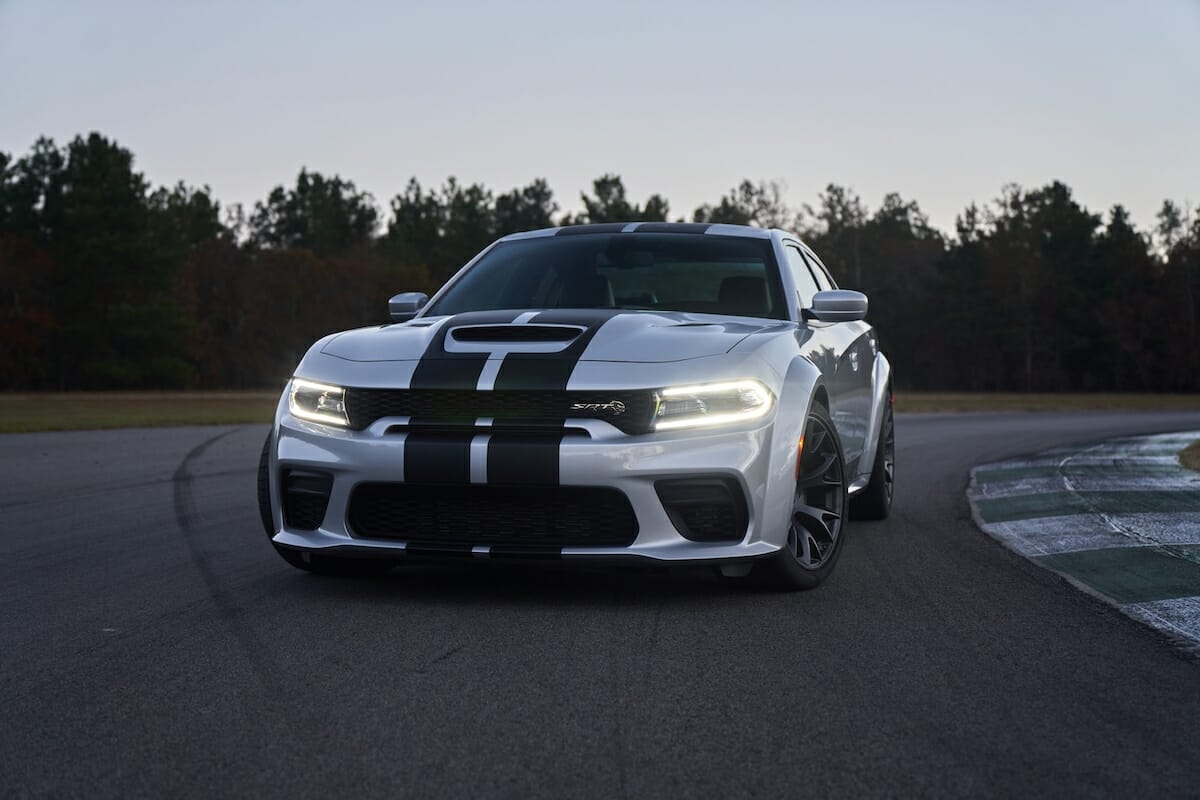
The iconic Charger namesake made its return with the 2006 Dodge Charger. This is considered the sixth-generation Dodge Charger — and it came with a bit of controversy. The fact that it is a sedan upset some Dodge purists and enthusiasts, because the Charger had traditionally been a two-door.
Nonetheless, the Dodge Charger is a staple of the past two decades. Dodge has gone out of their way to keep the muscle car spirit of the 1960s alive and well between the Charger and, of course, the Dodge Challenger.
Following up on the sixth-generation Charger comes the seventh-generation models. This generation started with the model year 2011 Dodge Charger and continues into today. Though many of the styling cues from the sixth-generation models remain, the seventh-gen. brings more modern details, lighting, and powerplants.
Most prominently, the seventh-generation models brought the almighty Dodge Charger Hellcat and widebody models.
While the first thing that comes to mind for most people when a Dodge Charger engine is brought up is that it typically has eight cylinders, but there are actually a surprising amount of engine options over the span of the sixth- and seventh-generation models. From a surprisingly efficient fuel-efficient six-cylinder option to the legendary supercharged Hellcat V8.
There is a Dodge Charger engine for everyone, whether you’re looking for a mild daily driver or a wild weekend racetrack experience. Let’s take a look at the various engine options over the course of the sixth- and seventh-generation Chargers and their specs. This way, shoppers considering buying a used Dodge Charger know all the details to ensure they’re getting the right vehicle.
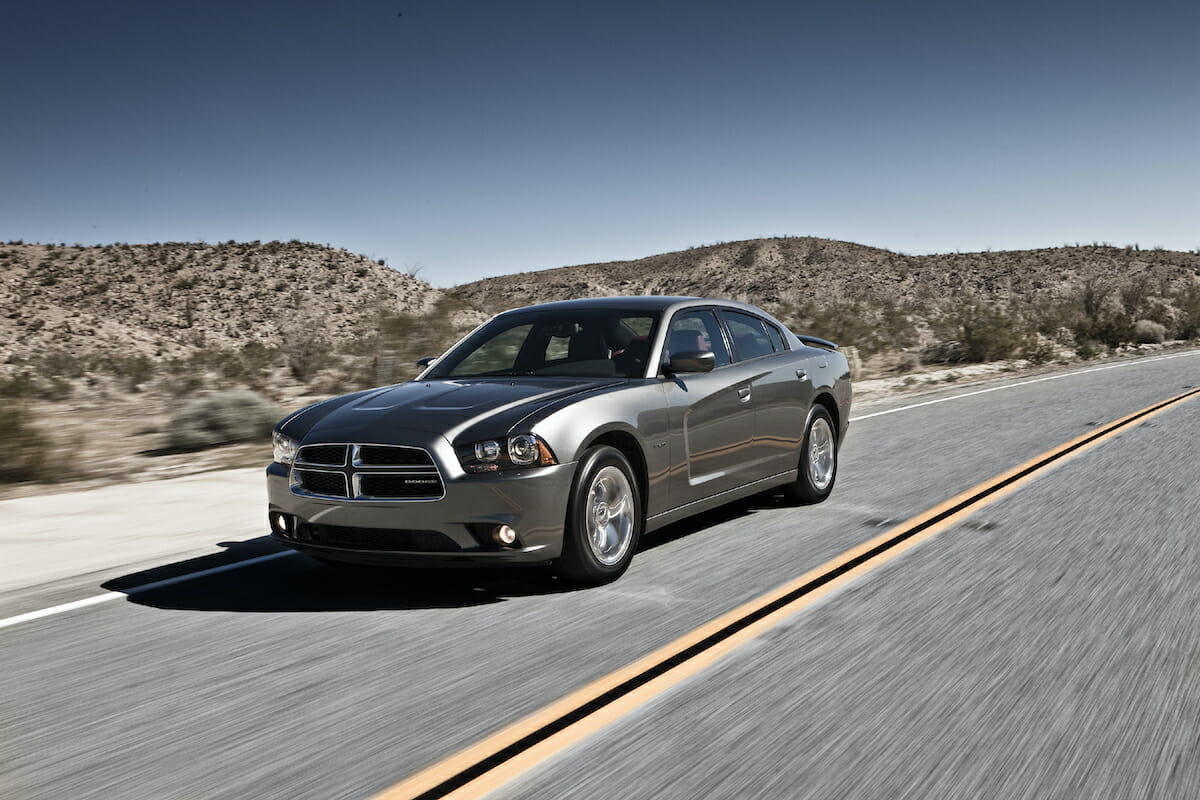
Sixth-generation Dodge Charger V6 Engine Options
The sixth-gen. Charger came with four engine options, two V6 options, and two Hemi V8 options.
The smallest engine option for the sixth-gen. Dodge Charger is the 2.7-liter V6 found in SE models. It uses both an aluminum engine block and aluminum cylinder heads. Additionally, it has a compression ratio of 9.9 to 1. The resulting power output in the Charger is 190 horsepower and 190 lb.-ft. of torque.
While it isn’t a staple of power, it does offer the best fuel economy of the entire Charger lineup with EPA ratings of 18 mpg city and 26 mpg highway. This engine was primarily found in fleet vehicles. However, it was available with base Chargers throughout the run of the sixth generation’s production.
Next in line is the 3.5-liter V6, which is found in SXT models. Like the 2.7, it uses aluminum cylinder heads. However, the 3.5 differs in that it uses as a cast-iron engine block. The 3.5 V6 found under the hood of the sixth-gen. Charger has a compression ratio of 9.9 to 1. The resulting power output is 250 horsepower and 250 lb.-ft. of torque.
While the 3.5 is still not the most inspiring in terms of power output, it does offer a decent jump relative to the 2.7-liter V6. Additionally, the 3.5’s power increase does not come at the cost of a substantial drop in fuel efficiency. The 2008 Dodge Charger equipped with the 3.5 has EPA ratings of 17 mpg city and 24 mpg highway.
While the V6 options offer a decent value for money and are advantageous in fuel economy, muscle car enthusiasts tend to prefer the V8 options.
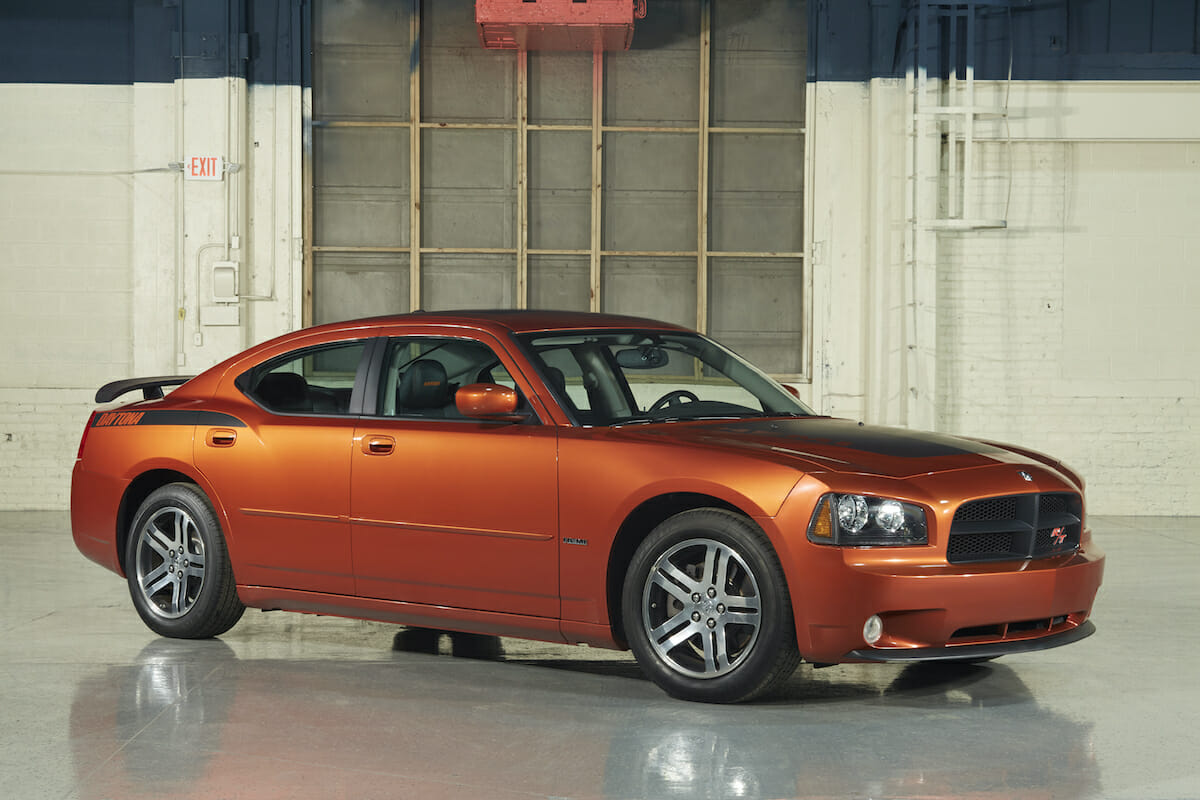
Dodge Charger V8’s Hemi Design
Both V8 options for the sixth generation Dodge Charger use the iconic Hemi design. Hemispherical combustion chambers and classic camshaft-in-block pushrod engine technology.
The first V8 option found in the sixth-generation Dodge Charger is the 5.7-liter Hemi found in the R/T models. It uses an engine block made of cast-iron and aluminum cylinder heads. It has a compression ratio of 9.6 to 1.
This engine offers a substantial leap in horsepower relative to the V6 options. It has 340 horsepower and 390 lb.-ft. of torque. It has EPA ratings of 15 mpg city and 23 mpg highway, which is slightly higher than one might expect.
The sixth-gen. Charger’s final and most powerful engine offering is the 6.1-liter Hemi V8 found in the SRT8 models. Like the 5.7, it uses a cast-iron engine block and aluminum cylinder heads. It has a compression ratio of 10.3 to 1.
The resulting power output is 425 horsepower and 420 lb.-ft. of torque. As one would expect, it is the least fuel-efficient offering with EPA ratings of 13 mpg city and 18 mpg highway.
When shopping for a used sixth-generation Charger, buyers should turn to the 5.7 Hemi R/T models if they aren’t looking to go all out with an SRT8. It offers the power and tradition of a V8 without sacrificing too much fuel economy relative to the V6 models.
Regardless of which model buyers choose, it’s important to know the background of a vehicle. Used car shoppers should run a VIN check using our free VIN research tool to get a detailed look at a used car’s history.
Seventh-generation Dodge Charger’s Engine Options
The seventh-gen. model Dodge Chargers also offers four engine options from the model year 2015 forward thanks to the addition of the Charger Hellcat. The engine offerings now include only one V6 option, with three Hemi V8s holding up the other end of the spectrum.
The Pentastar 3.6-liter V6 found in base model seventh-gen. Chargers uses all-aluminum construction. Additionally, it uses a modern dual-overhead-camshaft (DOHC) layout, meaning each cylinder head has two camshafts to control valve timing.
Additionally, it has variable valve timing for maximum fuel efficiency. It has a compression ratio of 10.2 to 1. The resulting power output is 292 horsepower and 260 lb.-ft. of torque, a substantial improvement on the V6 offerings from the sixth-gen. models. Even more impressive is the fuel economy. EPA ratings are up to 19 mpg city and a whopping 30 mpg highway.
The smallest V8 offering for the seventh-gen. Charger models is the trustworthy 5.7-liter Hemi. Though the materials and components remain the same from the sixth-gen. models, the power saw a slight increase to 370 horsepower and 395 lb.-ft. of torque.
Fuel economy also increased thanks to the use of an eight-speed automatic transmission. 5.7 equipped seventh-gen. Chargers have EPA ratings of up to 16 mpg city and 25 mpg highway.
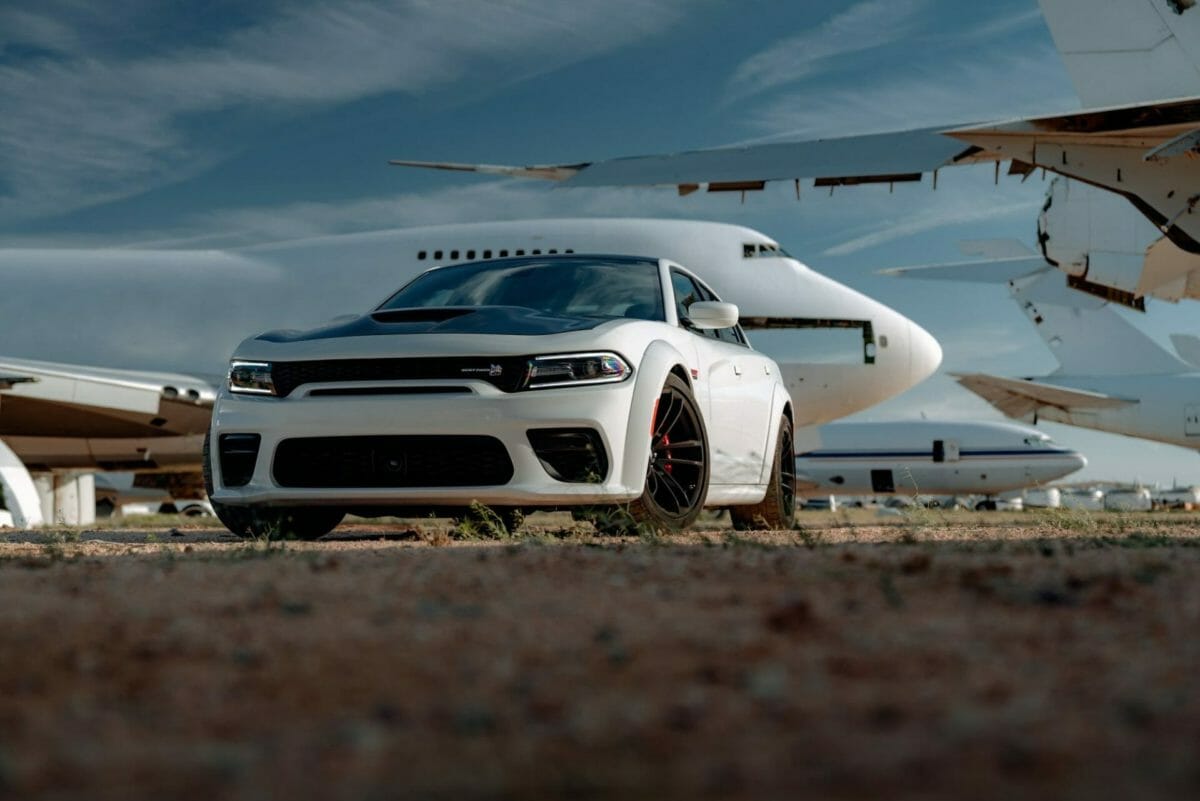
Seventh Generation’s 6.4L Hemi V8
Next in line is the 6.4-liter Hemi V8. It is advertised as the 392 Hemi, referring to its displacement in cubic inches. As expected, it follows tradition in using a cast-iron engine block with aluminum cylinder heads. It has a 10.9 to 1 compression ratio, resulting in up to 485 horsepower and 475 lb.-ft. of torque.
Though the power output is nothing short of substantial, the fuel economy ratings are, again, not quite as bad as one might initially expect. The Dodge Charger 392 has EPA ratings up to 15 mpg city and 25 mpg highway.
The final and most fearsome engine option for the seventh-generation Dodge Charger is the Hellcat 6.2-liter supercharged Hemi V8. Like the 392, it uses a traditional cast-iron engine block and aluminum cylinder head construction.
However, it has a lower compression ratio of 9.5 to 1 to accommodate the positive boost created by the supercharger.
The Dodge Charger Hellcat has 707 horsepower and 650 lb.-ft. of torque through the 2020 model year. This variant of the Charger Hellcat has fuel economy ratings up to 13 mpg city and 22 mpg highway. Obviously, this is not a vehicle for efficient daily driving.
However, the 2021 Dodge Charger Hellcat Redeye saw another massive jump in power to 797 horsepower and 707 lb.-ft. of torque. This increase also dropped the fuel economy ratings to 12 mpg city and 21 mpg highway.
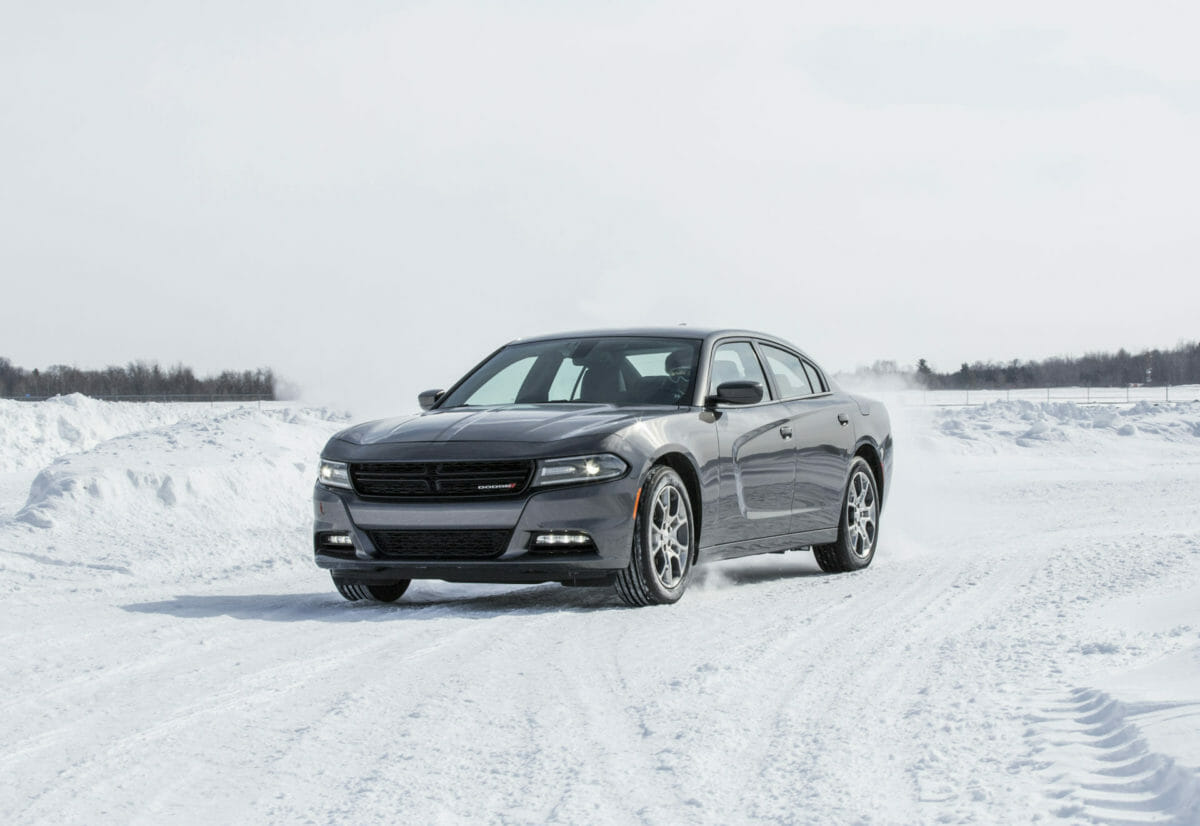
How Much Does a Dodge Charger Engine Cost?
The span of the modern Dodge Charger’s run means there is a Charger within the budget of virtually everyone. Shoppers can find early V6 examples well below $5,000, sometimes as low as $2,000.
So, whether you’re looking for a fun, sporty daily driver that isn’t too bad on gas or you’re ready for a supercharged weekend monster with over 700 horsepower, the Dodge Charger has a solution for you.
Photos: Dodge
